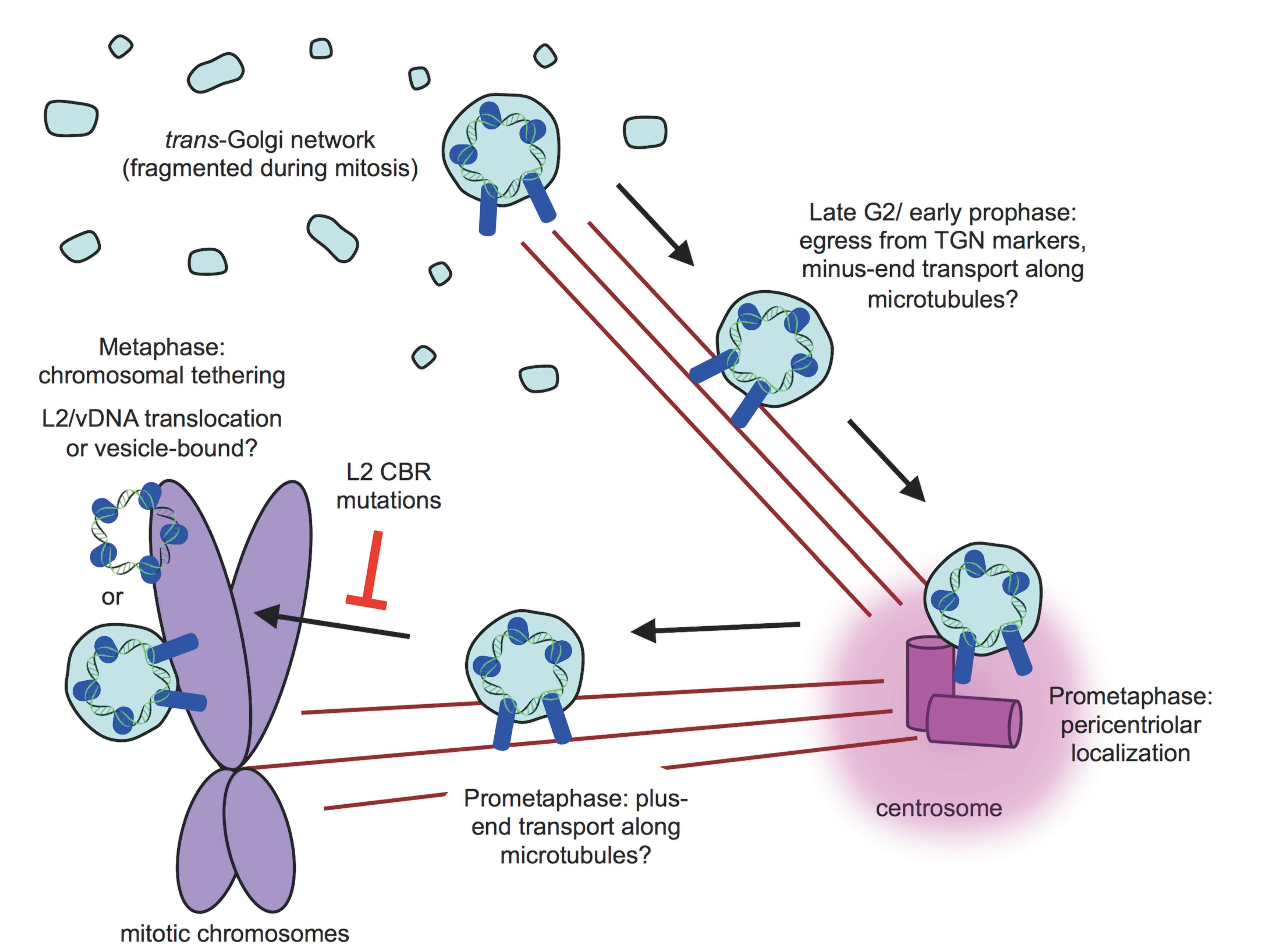Beginning in 2012, our understanding of human papillomavirus (HPV) subcellular trafficking has undergone a drastic paradigm shift. Work from multiple laboratories has revealed that HPV has evolved a unique means to deliver its viral genome (vDNA) to the cell nucleus, relying on a myriad of host cell proteins and processes. The major breakthrough finding from these recent endeavors was the realization of L2-dependent utilization of cellular sorting factors for the retrograde transport of vDNA away from degradative endo/lysosomal compartments to the Golgi, prior to mitosis-dependent nuclear accumulation of L2/vDNA. An overview of current models of HPV entry, subcellular trafficking, and the role of L2 during initial infection is provided below, highlighting unresolved questions and gaps in knowledge.

